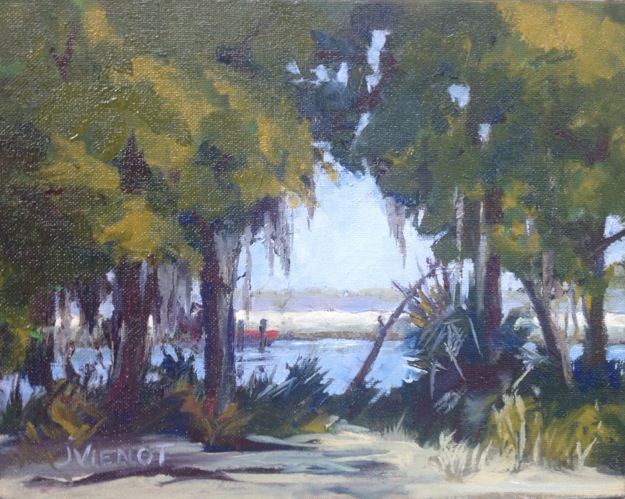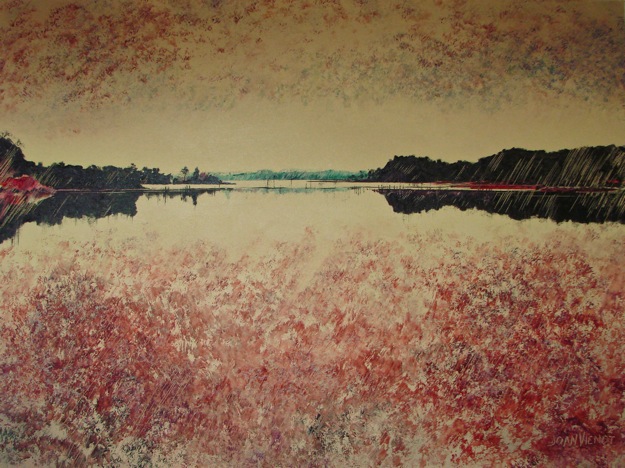 Last year I took my first workshop in plein air painting. I had been painting weekly with the local plein air group for about 14 months when I took that first workshop with Morgan Samuel Price. But I found each day of this year’s workshop even more challenging than last year. According to Morgan, that is the painter’s life. She says that a plein air painter just keeps finding more and more challenges. The more experienced they get, the harder the challenges they find for themselves. Sigh, I thought this was supposed to get easier!
Last year I took my first workshop in plein air painting. I had been painting weekly with the local plein air group for about 14 months when I took that first workshop with Morgan Samuel Price. But I found each day of this year’s workshop even more challenging than last year. According to Morgan, that is the painter’s life. She says that a plein air painter just keeps finding more and more challenges. The more experienced they get, the harder the challenges they find for themselves. Sigh, I thought this was supposed to get easier!
What an amazing group of artists in this year’s workshop! Lynn Wilson, Carol Drost Lopez, Becky Anderson, Charlotte Hope, Nancy Smith Crombie, Patricia Irish Richter, Brenda Anderson, Sherry WetheringtonA, Mary Wain-Ellison, Glenda Coleman, Karen Snider, David M. Jones, and I: thirteen of us. One of the best parts about the workshop was the critique session held each day at the end of the day. We would line up our efforts, even if it was just a few brushstrokes, and Morgan would discuss each and every painting, directing her comments to that artist but for the benefit of us all. This was addition to her amazing morning teaching and demo sessions, and our afternoon practicing painting en plein air, all making for a superb workshop for beginner and advanced painter alike. Blessed with infinite patience and superb focus, Morgan is able to work despite the constant distractions of the excited artists milling and buzzing around her, cameras clicking next to her ear. Below are a few shots of her working. You can click on any of the images to see a larger view.
 |
 |
 |
 |
 I had confidence to be away from my pool service business. I had worked long hours the weekend before the workshop, to clear my desk, plus I have a fantastic crew in the field and a wonderful office staff. On Wednesday my staff decided to show me what was happening there in the office, with a series of photos that even Tamra’s store helpers (her two dogs) had a part in. Here’s the worst one, Tamra Thomas, Margaret Bush, and Brenda Osborne. Clearly they do not have enough work to do.
I had confidence to be away from my pool service business. I had worked long hours the weekend before the workshop, to clear my desk, plus I have a fantastic crew in the field and a wonderful office staff. On Wednesday my staff decided to show me what was happening there in the office, with a series of photos that even Tamra’s store helpers (her two dogs) had a part in. Here’s the worst one, Tamra Thomas, Margaret Bush, and Brenda Osborne. Clearly they do not have enough work to do.
The city and area around Apalachicola is such a scenic place, with the historic buildings, working waterfront with shrimp boats galore, oystermen, grottos and lagoons — it is heaven for painters. The home of Forgotten Coast en Plein Air, you often can find an artist or photographer at work.
Below are some of my works from the workshop with Morgan Samuel Price. Daily critiques were at a set time. Work had to be halted then if we wanted to hear what Morgan had to say about our progress. Click the photo for a larger image.
 |
 |
 |
 |
 |
 |
On the last day I was captivated by a thistle in bloom, so after I finished my landscape, I captured the pink of the flower by using a tint of color I had not ever used before, quinacridone magenta, which turned out to be perfect for painting thistles and I believe also should make painting azaleas easy. I am finding I generally prefer to mix my colors instead of using specialty pre-mixed tubes, but in this case I was very pleased with the chroma.
I shot the photo below using my iPhone.
Contact me if you are interested in purchasing work from this page or any of my online galleries.
See the next post for the weekly paintings done just before and after this workshop.

















































